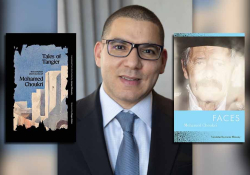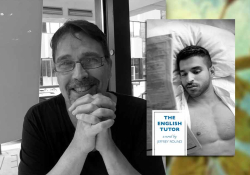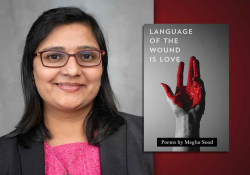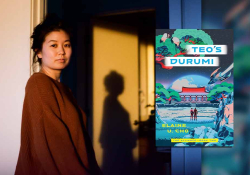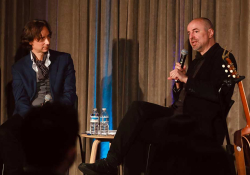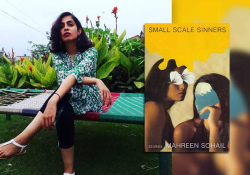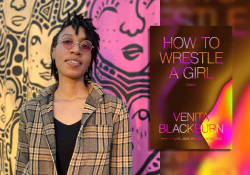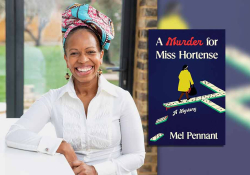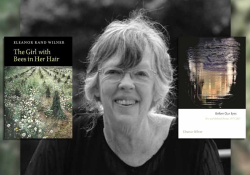“A Multiplicity of Voices”: Diane Glancy Meets English 4000
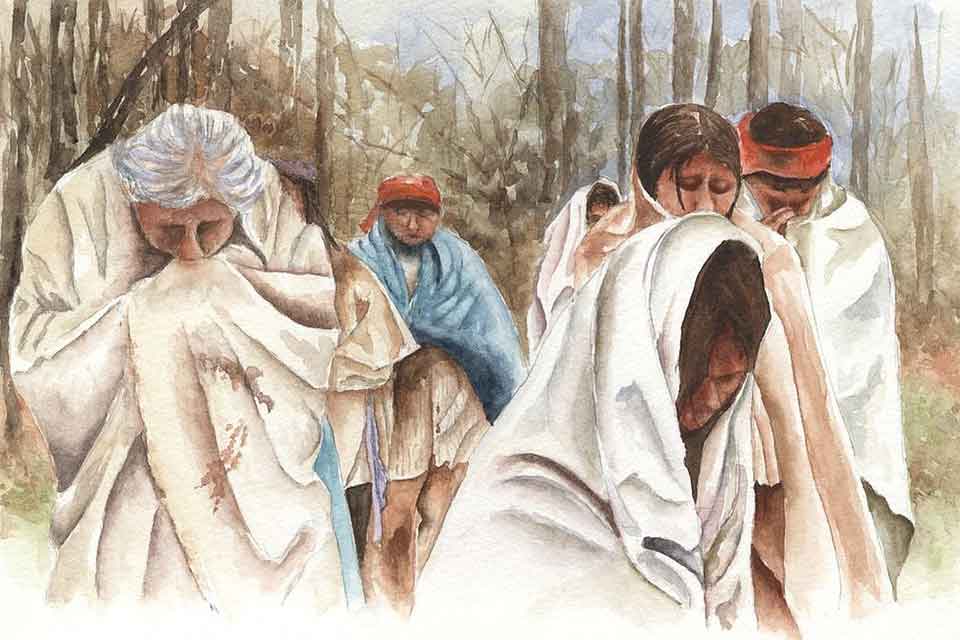
In the fall of 2021, I taught a special-topics course on Native women writers, featuring the works of Diane Glancy, Louise Erdrich, and Joy Harjo. My students were juniors and seniors across a range of majors, including English, English education, communication, and psychology. Our course texts included two novels from Glancy: Stone Heart: A Novel of Sacajawea (Overlook Press, 2003) and Pushing the Bear (Harcourt, 1996), her novel of the Trail of Tears. While our discussions centered on the usual topics of literary analysis and historical details, my students recognized a far greater value in these books. They saw Glancy not as a fiction writer but as a public educator in a world hesitant to tackle subjects of identity and historical offenses. For the education majors, in particular, her works were profound and foundational. In a course filled with reading, writing, and broader projects on research and language revitalization, these students sought an additional project that would extend into the following semester. They requested an interview with Ms. Glancy to discuss these issues, and she graciously agreed.
In the spring of 2022, our class met Ms. Glancy through Zoom, and we were immediately captivated by her sincerity and eagerness to engage. Her responses provide key insights into her timeless works. They also reveal the basis of all her novels, including A Line of Driftwood: The Ada Blackjack Story (Turtle Point Press, 2021). Ultimately, her responses are rich in poetry and wisdom—an unforgettable gift for these unforgettable students.
Katelynn Nelson: We are very excited and thankful for the opportunity to talk to you. In preparation for our interview, we reflected on how we had discussed your books in class. We referred to your work as historical fiction, which has been defined as “a fictional story loosely based in historical fact.” But you do so much research and you are so well informed on your topics that it almost feels like an offense to call what you do “loosely based in historical fact.” We would like to begin our interview by asking, “What do you call what you do?”

Diane Glancy: You ask a very good question; it’s a hybrid. Pushing the Bear is fiction in that I made up the voices and a lot of the people, though some of them are real characters. And it’s also nonfiction because it is true. The Trail of Tears was there; it’s a historical fact. You know, my children went to high school in Oklahoma, and their textbook said, “And they walked nine hundred miles.” And I thought, “Wait a minute, what was that like?” I started with that basic question. I started with nonfiction: this is a historical fact. But so little of it was known because the Cherokee did not take notes as they went along the trail, so I had to also base it on fiction. It’s historical fiction/nonfiction: a hybrid look into history, because voices are missing, and I wanted to add those missing voices.
Nelson: History is so often written from the side of the oppressor. But Pushing the Bear allows us to see and experience the Trail of Tears through the eyes of the Native American characters. Could you talk to us more about the importance of giving a voice to those who were oppressed throughout history?
Glancy: I think it is very important. Isn’t America a land of many different peoples and many different voices? Yet not a lot of those voices are heard, or they are suppressed or put behind other “major” voices. I asked, “What would it have been like to walk the trail?” I actually drove that nine hundred miles, not all at once, but I would drive a few miles and then have to go back and teach. Then there would be a break, a spring break or a fall break, and I would drive again. So many of those voices came from the land. All along the way, there were these little plaques that said, “The Cherokee camped here overnight on their journey west.” And I would just sit there and think about what it must have been like to be in the cold and to be removed from your home, your house, your belongings, to be facing the unknown. To some extent, we face the unknown every day in our lives.
One of my favorite things in the book was the crossing of the Mississippi River, where ice chunks were flowing in the river. I was actually there in the summer of 1992 when the Mississippi River was at flood stage. A flood is very quiet because the river is so huge, it just moves along. I was sitting on the bank of the Illinois side looking across the river to Missouri, and Maritole’s voice came. She had this flashback of her grandmother, the spirits, helping her across the river. I think those unspoken voices in history want to be heard. There were times that I felt an intercession. I don’t believe in channeling. I don’t believe in ghosts. I don’t believe in strange stuff. I’m a very “meat and potatoes” type of person. But there was an intrusion of voices. I was able to see much more than I knew. I think, when you work at your projects long enough, more than you know is there. There are tribal memories, racial memories, memories that are like our DNA that are emotional and spiritual. As you grow, work, and do what you love to do, you just open up. Your interior landscape becomes larger.
As you grow, work, and do what you love to do, you just open up. Your interior landscape becomes larger.
Grace Lewis: After reading your books Pushing the Bear and Stone Heart, I wrote a research paper about the gradual removal of culturally diverse topics in textbooks. Today’s history class is skimming the surface, so your books are often teaching us things we didn’t learn about in the first place. I wanted to know more about your process for choosing subjects to write on when there’s such a gap in your readers’ knowledge.
Glancy: I did see on Facebook one day that even the Trail of Tears will be missing from textbooks in Oklahoma, and there was a quote, “to make room for other things,” because so much more has happened in the meantime. Who cares about history anymore? Well, I do, for one. I was an English major in college, but I’ve always had a great interest in history, and I always paid attention to things that interested me like those left-out voices. I was always very quiet in school, and that birthed an interest in me of writing about those who did not have a chance to speak or whose voices were left out of history. I’ve done Sacajawea with Lewis and Clark, and Kateri Tekakwitha, who was a Mohawk converted by the Jesuits. What was it like for Sacagawea on the expedition? What was it like for Kateri Tekakwitha when she saw these black-robed Jesuits come into the land and tell her of a new way of believing? So you are so right that history is being removed, the history that I’m interested in, anyway. We are the past. We are what has happened. It informs who we are, and so the past has always been important to me.
History is also interesting because you get so much conflicting information: “There were seventeen thousand people on the Cherokee Trail of Tears,” “There were thirteen thousand,” “There were eleven thousand.” Nothing really ever agrees in these concrete terms, so you have to look, do your research, and then use common sense and the imagination. Research, common sense, and imagination are the three things that I have always relied on. When I was writing about the Trail of Tears, I drove it. When I wrote about Sacajawea, I drove the Missouri and the Columbia Rivers, and I would stop by the river and sometimes I would wash a little edge of the wave over my paper, and I began to hear the voice of Sacajawea. I could hear the rhythm—the oaring, rowing rhythm—in Sacajawea’s voice. The voice came out of the land; it came out of my interest, my longing to know, my work to get in my car and drive all that way, and to spend time asking permission to write these lost voices.
When I was writing about the Trail of Tears, I drove it. When I wrote about Sacajawea, I drove the Missouri and the Columbia Rivers.
Carley Nail: Stone Heart presents a side of history that is rarely shown. Sacajawea is often hidden away, but you told the story by exploring new elements of her character, such as heartache and persistence. Why was it important for you to tell her story specifically? What does your retelling of this moment in history offer future audiences or students?
Glancy: I think correcting misrepresentations, first of all. I saw a statue of Sacajawea and Lewis and Clark. I forget where it was, but she was pointing the way upriver, and Lewis and Clark were sort of going, “Yes, I’ll follow her.” It wasn’t that way at all. She was a young woman. She was probably fourteen years old. She had just had a baby. She had to carry him on her back when they started out. Her husband, Toussaint, was abusive to her. So it was just the misconception of Sacajawea.
Around 2000, I realized that the bicentennial of the Lewis and Clark expedition (1804–1806) was coming, and I wanted to do some work on it. I wanted to look at her voice. So the first thing I did was take the Lewis and Clark journals out of the library at my college. There were twenty volumes. They were heavy, so a student helped me get them up the stairs and into my office. I began looking at the journals, and she is hardly ever mentioned. She did not know where they were going. It was Lewis and Clark and their brilliance as they started out to rename the land, claiming it as theirs. She was only significant one time, and that was in the winter in the Bitterroot Mountains. The Nez Perce captured them and were going to kill Lewis and Clark and the thirty men with them. But she stopped them. She told the Nez Perce these were good men who were just trying to find a way across the continent.
I wanted to show history from Sacajawea’s point of view and from multiple points of view. When Lewis and Clark got to the Mandan Village, it was about twenty degrees below, and the Northern Lights were in the sky. Meriwether Lewis was mathematical, charting the different degrees the lights moved across the sky. Sacajawea saw the lights as spirits fleeing because of the new men who would claim the land. I added the perspective of York, William Clark’s personal slave, who saw the lights as sails on slave ships when the play Stone Heart was produced at Native Voices at the Autry. So they each saw the world in their own way, from their own perspective. I was very interested in that view, to give a multiplicity to what had been a single point in history.
Caleb Fisher: In our class, we often discussed how the traumatic experiences of Indigenous people influence their literature. Kaylee was in a trauma theory class last semester, which added a foundation for our understanding. I was taking a class on the Black gothic in literature and film, which is heavily rooted in the traumatic experience of Black people. With that background knowledge, we tried to understand how this may influence Native American writing. How does the collective trauma of Indigenous people inform different aspects of your own writing?
Glancy: I think I’m very interested in the broken voices that have come out of trauma, and you will notice that Pushing the Bear is a multiplicity of voices where someone is speaking and then another is speaking and then another. It’s probably hard to keep in mind exactly who is speaking at a certain time, but it is that collective voice—that singular community the Native Americans had to speak from—because there are many diverse tribes within the Native American community. The collective trauma in the book is evident in the use of a broken narrative to tell a broken story.
I used that concept for Pushing the Bear, and I used it also for Stone Heart because Sacajawea speaks, and then Lewis and Clark speak—although I put them in boxes (if you remember the inside of that book) to hold Lewis and Clark from taking over the narrative and to give Sacajawea a chance to speak like the river. Her dialogue flows between the boxes Lewis and Clark were in. And then in The Reason for Crows, Kateri Tekakwitha speaks with the Jesuits; they get a time to speak, too. So it’s trying to make sense of the broken fragments of our lives. I think that’s an underlying concept, Caleb. It takes many voices to tell a story.
The collective trauma in the book is evident in the use of a broken narrative to tell a broken story.
Lauren Fee: In our conversation today and throughout all your works, we can definitely draw on the importance of language. As you just said, “It takes many voices to tell a story.” And as you know, many Native languages are being lost. Can you speak to the trends that you are seeing regarding language revitalization among younger generations?
Glancy: A lot of languages are being lost, but there are tribes that are trying to recoup the language before it is lost, before the grandparents die. It was tried a few years ago, but the students seemed to be interested in other things, music and what was current: “The language is boring. It’s hard to learn. Who am I going to talk to? How am I going to use it?” There was just a great disinterest in it, but now I think they’ve found different ways of teaching and engaging the young children, so that, even in preschool and elementary schools, they are beginning to teach language. On some of the reservations—the Lakota, especially—the nursery schools are telling and reading their stories in the Native language. There is a call from some publishers to write fairy tales in the Native language, so it becomes engrained in the child in the very beginning.
Fee: I did my language-revitalization project on the Haida tribe, who live on the Pacific Coast. They’ve written a children’s book in their Native language so whenever parents or grandparents want to practice their language, they can read it to the children. It’s an early children’s book, so they are getting those skills and hearing it at an early, foundational level. Do you feel that the education systems in America should treat these language-revitalization efforts with a higher priority considering the culture, traditions, and sense of identity that could be lost, along with the language?
Glancy: Native Americans are a small minority, and I can’t see Native languages being taught in any school because it’s just not relevant. It’s just so isolated. But on the Navajo, the Hopi, the Lakota, Chippewa, all of those—I think it would be very important within the tribe because language is so much of what is sacred and fundamental and integral to one’s being; we do not fare well without culture. It’s like the spine that holds us up. That was one of the problems of boarding schools, when they ripped off culture and ripped off Native language and punished children for speaking their Native language. You end up with somebody who doesn’t know who they are, and that opens one up to all the alcohol and abuse and drugs that are on reservations. I mean it is just rampant. And when you don’t have an inner sense of who you are, an inner sense of identify and inner trust of who you are, you’re just open to whatever comes along. So, yes, language is important, but teaching it is a problem.
We do not fare well without culture. It’s like the spine that holds us up.
Kaylee Sadler: My studies in trauma theory and Caleb’s background in psychology led to some really great discussions about your works last fall. More recently, I read A Line of Driftwood, and the reading experience was unlike any I’ve ever had. Part 1 begins by giving Ada Blackjack a voice in stanza form. Afterward, the form changes to feature Ada’s writings: scanned and transcribed texts from partially torn documents. Then you have the epilogue on your research trips, the beautiful essay on writing as a ventriloquist’s act, and the short narrative in which a polar bear and a ptarmigan are given a voice. After reading A Line of Driftwood, I’ve come to an even greater appreciation of form in your work. Why did you choose this overall form to tell Ada Blackjack’s story, and why does her voice come in the form of poetry?
Glancy: Somehow I found out about Ada Blackjack, and I learned she had a diary in Dartmouth College. I went to Dartmouth and into this research library, and sometimes you have to wear gloves, and they bring out this manuscript, and I could hold it in my bare hands. And the minute I held it and saw her words, another diary began to float above it, which is the one I wrote in the front of the book. It’s like there were parts of Ada she did not know how to explain. She was a Native woman, an Inuit. The only reason she was on the expedition was because she knew English and she could sew. But she had gone to a mission school, and mission schools right now are taking a big hit because bodies of Indian children are being uncovered from Canada, from the Indian Industrial School in Carlisle, Pennsylvania, everywhere. I mean education was fatal from neglect and from disease, sometimes from just a broken heart.
But those boarding schools sometimes were good because Ada learned English. She became a Christian there. My faith is always important to me, and so I wanted to tell a good story of something that happened in a boarding school, and Ada was one of them. The school gave Ada a purpose for her life; she had food to eat and a bed to sleep in. Otherwise, she would have been on the street with her mother. She was just beginning to become literate, and so she began writing this diary: “Today I did this, today I did that.” But under her, there was this embellishment. She loved to embroider her mukluks, she loved the embroiderment, but she could not yet reach that in her language. So I added that part. Again, I felt this haunting. I felt this voice wanted to say more than was in her basic diary that I was holding at the Dartmouth library.
There was something in her Native concept and thinking that was repetitive and rhythmic, and that was contrasted to the starkness of Wrangel Island as they began to starve. I think poetry is somewhere within us. If you slow down your voice enough, you can almost hear the iambic rhythm that I’m talking in now. There is that heartbeat rhythm that we’ve heard since birth. I’m talking again in rhythm. If you get away from television and all the noise of this world and begin to think in a creative voice, so often it comes in a rhythmic stance. I can almost speak in rhyme, almost. And because I’ve done it so long, I’m so aware of the rhythms and cycles in which we speak and see and feel. It was just kind of primitive. I sat down to write, and that’s what happened.
I always feel a sense of transgression when I work. And I think you should, too, as students, as you get in deep in your studies. Who am I to add to this? Who am I to give my opinion to the world? But that’s exactly what you should be doing. And you already are; I can hear that in the advancement of your questions. I always have a sense of transgression, and I did that with Ada, too. Who am I to rewrite her diary? Who am I to add to this woman? Who am I to do anything? You know, we have this internal editor or the great parent within us: sit down, be quiet, do your work, don’t bother me. It’s hard to get beyond that and to give yourself permission to come up with new theories, new thoughts—and if you get in trouble, you can always back off and go another way.
I’ve been in trouble a lot for the work I do because it’s like taking history and playing with it, augmenting it. And who are you to do that? I’ve been asked that question. I’ve asked myself that question. But that’s what we’re here for: to go on our own exploration trails with our own theories in whatever field—journalism, psychology, or history textbooks—whatever you do. You are here to blaze new trails and to say, “This is what I think.” So that was the whole purpose of Ada Blackjack. I wanted to honor her. This is the one hundredth year of the expedition, just like it was the two hundredth year of Sacajawea’s expedition when I wrote that book. So there’s something about time and memory and place and that adventure. And this is what I think.
If you slow down your voice enough, you can almost hear the iambic rhythm that I’m talking in now.
Mary Adams: We want to thank you for taking the time to speak with us. This interview grew out of the students’ desire to do more. We had a guest speaker who really inspired them, and, afterward it was Lauren who said, “We need to do something.” This interview is really a reflection of this younger generation’s desire to engage with information, not simply to passively receive it.
Glancy: You mentioned a very important idea, and this is my assignment to you all. Write this down: “What am I going to do about it?” That sentence will be applicable to you for your whole life. You read something about history that you don’t agree with. What am I going to do about it? I’m going to write a paper. I’m going to go to a conference and say what I think. I’m going to write a book. Who knows what you all will do. It’s such a long process. I was in my forties before Pushing the Bear ever came out. I don’t want to discourage you, but learning is a long process. And if you’re lucky, it will last you the rest of your life.
I have a new project right now that I’m working on; they come all the time. So what am I going to do about it? Sacajawea did not lead the expedition. There are no voices left from the Trail of Tears. What am I going to do about it? Ada Blackjack really didn’t have the time to write what she wanted to write about what it was like to be a human being. So what am I going to do about it? I face that question all the time, so that’s my gift for you for the rest of your lives, for whatever you come to face.

Diane Glancy is an immensely prolific author, known for novels and collections of poetry, short stories, and essays. Of Cherokee and German-English descent, she infuses history with Native voices that are rich in poetry and perspective. Her latest novel, A Line of Driftwood: The Ada Blackjack Story, continues her tradition of writing history through a process of “research, common sense, and imagination.”
 Mary E. Adams is a professor of English and coordinator of the English Program at University of Louisiana Monroe. She teaches courses in multicultural literature, composition, and pedagogy. She has reviewed a number of books for WLT, including Glancy’s Stone Heart and The Reason for Crows. She is pictured here with her student-writers on the scenic ULM campus. Pictured in front are Lauren Fee, English education senior, and Katelynn Nelson, English education senior. Pictured in back are Carley Nail, communication junior; Grace Lewis, English education senior; Adams; Kaylee Sadler, English senior; and Caleb Fisher, psychology junior.
Mary E. Adams is a professor of English and coordinator of the English Program at University of Louisiana Monroe. She teaches courses in multicultural literature, composition, and pedagogy. She has reviewed a number of books for WLT, including Glancy’s Stone Heart and The Reason for Crows. She is pictured here with her student-writers on the scenic ULM campus. Pictured in front are Lauren Fee, English education senior, and Katelynn Nelson, English education senior. Pictured in back are Carley Nail, communication junior; Grace Lewis, English education senior; Adams; Kaylee Sadler, English senior; and Caleb Fisher, psychology junior.
